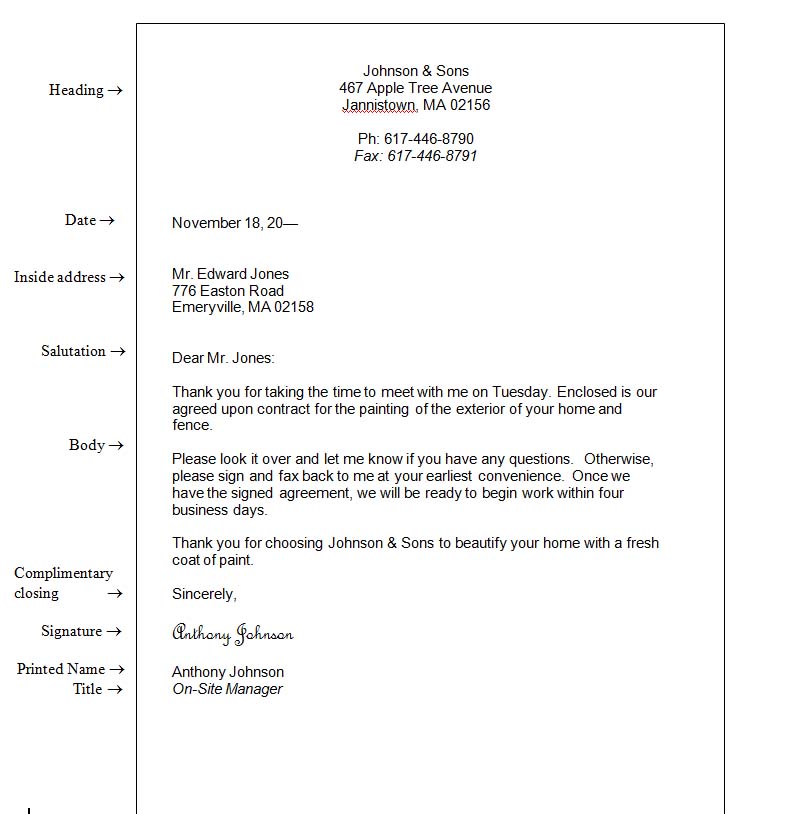Practicing these sentences will give you a thorough review of the most common keys and help you to continue to gain control of the keyboard. Be sure not to look at the keyboard when you are typing. Your speed and accuracy will be much higher when you can concentrate on the screen without looking at your hands.
Instructions:
� Practice typing each sentence 10 times
� Practice any words that have mistakes and then type those sentences over again 10 more times.
Bonus Practice:
� Once you have completed all sentences mistake-free, try typing them at an increased speed
� Practice any words that have mistakes and then type those sentences over again 10 more times.
SENTENCES:
1. Please take your dog, Cali, out for a walk � he really needs some exercise!
2. What a beautiful day it is on the beach, here in beautiful and sunny Hawaii.
3. Rex Quinfrey, a renowned scientist, created plans for an invisibility machine.
4. Do you know why all those chemicals are so hazardous to the environment?
5. You never did tell me how many copper pennies where in that jar; how come?
6. Max Joykner sneakily drove his car around every corner looking for his dog.
7. The two boys collected twigs outside, for over an hour, in the freezing cold!
8. When do you think they will get back from their adventure in Cairo, Egypt?
9. Trixie and Veronica, our two cats, just love to play with their pink ball of yarn.
10. We climbed to the top of the mountain in just under two hours; isn�t that great?
11. Hector quizzed Mr. Vexife for two hours, but he was unable to get any information.
12. I have three things to do today: wash my car, call my mother, and feed my dog.
13. Xavier Puvre counted eighty large boxes and sixteen small boxes stacked outside.
14. The Reckson family decided to go to an amusement park on Wednesday.
15. That herd of bison seems to be moving quickly; does that seem normal to you?
16. All the grandfather clocks in that store were set at exactly 3 o�clock.
17. There are so many places to go in Europe for a vacation--Paris, Rome, Prague, etc.
18. Those diamonds and rubies will make a beautiful piece of jewelry.
19. The steamboats seemed to float down the Mississippi River at a snail�s pace.
20. In order to keep up at that pace, Zack Squeve would have to work all night.
A good way to increase your typing speed is to type easy sentences over and over. That will help you to type smoothly without pausing. Try taking a typing speed test before and after to see for yourself. You can even work through this section multiple times and then track your progress.
Instructions:
� Practice typing each sentence 10 times
� Practice any words that have mistakes and then type those sentences over again 10 more times.
SPEED-BOOSTING SENTENCES
1. A bird in the hand is worth two in the bush.
2. Caught between a rock and a hard place.
3. Closing the barn door after the horse escapes.
4. Do I look like a turnip that just fell off the turnip truck?
5. Don't count your chickens before they hatch.
6. Don't make a mountain out of a molehill.
7. Friends are flowers in the garden of life.
8. The grass is always greener on the other side.
9. Just staying one day ahead of yesterday.
10. Lie down with dogs and wake up with fleas.
11. The sharper the berry, the sweeter the wine.
12. The squeaky wheel gets the grease.
13. The stronger the breeze the stronger the trees.
14. The way to a man's heart is through his stomach.
15. A weed is no more than a flower in disguise.
16. We'll cross that bridge when we come to it.
17. You can lead a horse to water but you can't make him drink.
18. You can't teach an old dog new tricks.
19. All work and no play robs one of some fun in life.
20. Your car is out of date as soon as it is paid for.

Helpful hints
- Write from the reader�s perspective
- Be specific when making your points and don�t use a lot of fluff
- Never use sarcasm
- Be respectful, modest and polite
Learning how to write an effective business letter can take some practice, but it won�t take long before writing professional-sounding letters come naturally to you.
Here are the basic steps to take when writing a business letter:
1. Establish what you wish to accomplish when writing the letter. Think about your reader�s needs as well.
2. Jot down a list of the points you wish to cover in the letter
3. Write the first draft
4. Take a break and allow yourself to �clear your head�.
5. Read over the first draft and make revisions until you feel it is good.
6. Proofread several times, checking for spelling and grammatical errors. Don�t rely solely upon your computer�s Spell Check program. Computers don�t understand context or homophones.
Using the steps above will help you to write a well thought out and organized business letter. When writing a letter, it�s important to remember that business letters are meant to be professional, not casual. That doesn�t mean the letter needs to sound like a boring government document with big, legal-sounding words. It just means that you�ll refrain from using some of the more casual words you might use when writing a note to a friend. For instance:
Change: This is great! I had no idea that sales would jump so high!
To: The new sales numbers are very impressive and even higher than I had expected.
Establishing the TONE of your letter
In writing, tone is the writer�s overall attitude toward the reader and the subject matter. For business letters, the tone should always be professional, however, in different situations your letter may also need to take the tone of:
� Sympathetic
� Apologetic
� Persuasive
Typically, a business letter is written to a specific individual. It�s important to remember, whether or not you know the person, that you are writing to a human being � not to a company. Remember, a business letter is not a report; it�s a personal, yet professional message. Your words should sound natural, not forced. A business letter should be written in a professional conversational style. As you are writing, put yourself in your reader�s position. Ask yourself, �How would I feel if I received this letter?� Be sure nothing is offensive, impersonal or unfriendly. Remember, when you are writing a business letter you are representing not only yourself, but your company. Your letters should always express thoughtfulness and sincerity. Here�s an example:
Change: We can�t refund your money unless you include a receipt.
To: So that we can promptly refund your money, please enclose a receipt.
Writing an effective business letter also means putting your reader�s needs first. That means using words like you and your more than I, my, we and mine. You should always try to stress the reader�s interests and benefits. Notice in the revised example above that the reader�s benefit �refunded money� is placed at the beginning of the sentence, rather than at the end.
When delivering bad news, the opposite technique should be used. You should take careful attention to first offer a positive explanation before giving the bad news. This is called the �buffer�. Then, in closing, you should offer some additional positive words as a �goodwill� gesture. For instance:
Before: Your application for the retail manager position has been rejected. We decided to hire a more qualified candidate.
After:
(buffer): Thank you for taking the time to apply for our retail manager position.
(bad news) Since we are looking for someone with experience in both management and retail sales, we have selected an applicant with over 5 years of experience in both fields.
(goodwill) I am sure that with your background in retail sales you will soon find a position with another company.
In general, good news should be delivered like this:
1. Good news
2. Explanation
3. Goodwill
And bad news should be delivered like this:
1. Buffer
2. Bad news
3. Goodwill
The Parts of a Business Letter:
1. Heading
2. Date
3. Inside address
4. Salutation
5. Body
6. Complimentary closing
7. Signature
8. Typed name
9. Title
Heading
This contains the name of the company and the company�s full address (street, city, state and zip code). It�s also standard to include any of the following: phone number, fax number, website address and email address. Typically, business letters are printed on a company�s letterhead, which will, most likely, already contain all of the heading information. The heading should be either centered or aligned with the center line.
Date
This is the date your letter was completed and is ready for mailing. It should be aligned with the left margin. The date should be at least three spaces below the heading.
Inside address
The recipients full name and address. You should begin the inside address two spaces below the date. If you are writing to a business associate you should also include their title and company name.
Example:
Ms. Janet Ressa
Director of Research
BioEngine
446 Device Road
Tandle, CT 06615
Salutation
This is where you first make personal contact with your reader. The salutation, or greeting, should be two spaces below the inside address and also aligned with the left margin. For business letters, the salutation should always contain the recipient�s title (Mr., Ms., Dr., etc.) and last name, followed by a colon (not a comma).
Important points to remember:
� Address women without a professional title with Ms. (never Mrs. or Miss, unless she has expressed her preference to you).
� If you do not know the name of the recipient, it is no longer acceptable to address it to, �Dear Sir�, �Gentlemen� �Dear Sir or Madam� etc. Simply address the letter to the appropriate department or use a subject line instead.
Example 1:
Attention: Human Resources Department
I would like to request�..
Example 2:
Subject: Lost shipment for P.O. # 22365
According to the latest tracking��.
Body
The body begins one space below the salutation and contains the message of your letter. Two of the most important parts of the body of a business letter are the opening and the closing statements. The opening should identify your subject so as to quickly interest the reader. The closing should let the reader know what the next step is or create goodwill � or both.
Complimentary Closing
Standard closings for business letters are:
� Yours truly,
� Sincerely,
� Sincerely yours,
� Best regards,
� Very respectfully, (sometimes abbreviated as V/R in less formal communications)
Only the initial letter of a closing is capitalized and the expression is followed by a comma. The complimentary closing is then followed by the writer�s:
� Signature
� Printed name
� Title

Additional pages:
|
Mr. Edward Jones -2- November 18, 20-- |
Business Memos
Helpful hints
� Think of your readers and their needs.
- Be specific when making your points
- Make your subject line short and descriptive.
- Use bullets or numbers to clarify points or lists.
- Cover only a single subject
- Memos should be short and concise; try to keep it to one page.
Called memos for short, memorandums are routinely used within an organization to communicate a variety of ideas�from a new sick day policy to short reports and proposals. Among their many uses, memos confirm conversations, share ideas, instruct employees and communicate policies. Because memos are either requesting or sharing important information, they need to be carefully and concisely written so that the message is clear and accurate. A poorly written memo could confuse readers, offend employees, and create a loss of time.
Even with the popularity of e-mail and teleconferencing, surprisingly, effective memo writing remains an essential skill in inter-office communications. Memos may be delivered via e-mail, but they should still follow the same professional and formatting standards as those printed on paper.
Typically, memos are short and communicate a single subject. If you have two subjects to cover, consider writing two separate memos.
Here are the basic steps to take when writing a business memo:
1. Jot down a list of the points you wish to cover in the letter
2. Write the first draft
3. Proofread, checking for spelling and grammatical errors. Don�t rely solely upon your computer�s Spell Check program. Computers do not understand context and will never know if you meant your instead of you or you�re.
Writing a memo isn�t difficult and doesn�t require much time. Just remember that a memo is in writing, which means it is permanently documented. Your memo represents you and your company--any glaring errors may cast you in a negative light amongst your peers and subordinates.
Establishing the TONE of Your Memo
Depending on the type of memo and who your readers are, different memos should be written with different tones. For instance, if your memo is announcing the company�s holiday party it should have a fun and festive tone, not serious and formal.
Example:
Change: It has been decided that the annual holiday party will be on Friday, December 16th. It will begin at 6:00pm and will end at precisely 9:00pm.
To: Ready for some fun and festivities? Our holiday party will be on Friday, December 16th from 6:00pm-9:00. There will be music, snacks, drinks and even a secret Santa gift exchange! We hope to see everyone there. Happy Holidays!
On the other hand, if you are requesting a deadline extension from a superior, you would take a professional and formal tone. However, formal doesn�t meet stuffy, droning on or using big words from a thesaurus (writing like that can leave you looking stuffy and out of date).
Example:
Change: In can be seen from the lack of progress in gathering the 2nd quarter�s numerical data, that we will need additional time to conclude the assignment.
To: Because of the Shanghai office�s two-week closing, we were unable to gather all of the second quarter data. Now that the Shanghai office has re-opened, we will need an additional two weeks to retrieve the final numbers and finish the project.
A Memo�s Opening
Typically, a memo should begin with you stating your precise purpose in writing the memo. That may begin with a brief summary of the problem but the main point should be covered.
Examples:
1. The office will be open the day after Christmas.
2. Because of the damage the fire caused to the lower level of the building, all employees with first-floor offices will be temporarily using the computers in the training room to do their work.
The exceptions to putting the main idea first are when:
� You are giving bad news
� When readers are likely to be skeptical
� when you are in disagreement with your superiors
In the above cases, it will work to your advantage to use a more persuasive tactic by first stating the problem and then present points that support your recommendation. When done properly, this method can lead the reader to your desired conclusion before you even tell them what it is.
Making Your Memo Easy to Read
Long blocks of text are hard to read and unappealing to look at. It�s often a good idea to use short paragraphs, headings, and lists to break up text and lay your message out in a logical format.
Short paragraphs � Try to limit each paragraph to one idea. If a one-paragraph idea seems too long, see if you can make your point more precise or try to create two paragraphs, each communicating a different part of the point.
Headings � In long memos, headings are a great way to divide the material into manageable segments. They not only call attention to main topics but they also let the reader know when there is a change in topics.
Lists � Using lists to emphasize critical points is much more persuasive than lost text in a lengthy paragraph. Just be sure not to overdo bulleted or numbered points. A memo full of lists is difficult to understand because readers need to connect the points themselves, rather than being guided by text.
A Memo�s Ending
Typically, memos don�t require a conclusion other than the optional "Please contact me if you have questions" or something similar. Memo�s aren�t� letters and don�t require the writer to include a closing signature. To signify that you wrote and approve of the memo, a writer should write their initials next to their name in the From line of the heading.
The Parts of a Business Memo:
Here is an example of a typical business memo:
The Dashing Dance School
MEMORANDUM
DATE: May 23, 20�
TO: Advertising Department
FROM: Mandy Joyne
SUBJECT: Third and Fourth quarter marketing ideas
____________________________________________________
After our meeting on Tuesday, we had a chance to review your marketing suggestions for third and fourth quarter and would like to immediately move forward with the �Back to School� series of advertisements.
� 20% discount for all class sign-ups during August and September
� Free Dashing Dance School T-shirt for all new dancers.
� New �Hip Hop Moves� and �Techno Funk� classes begin September 15 and were choreographed by Johnny James from the �Dancing Shoes Kickoff� TV show
� After-school classes begin at 3:00pm and 3:30pm.
We are still reviewing the other marketing ideas you presented, but wanted to give you the go-ahead on this one. Thanks for all your hard work and we will have a decision made for the remaining ideas within 1-2 weeks.






























